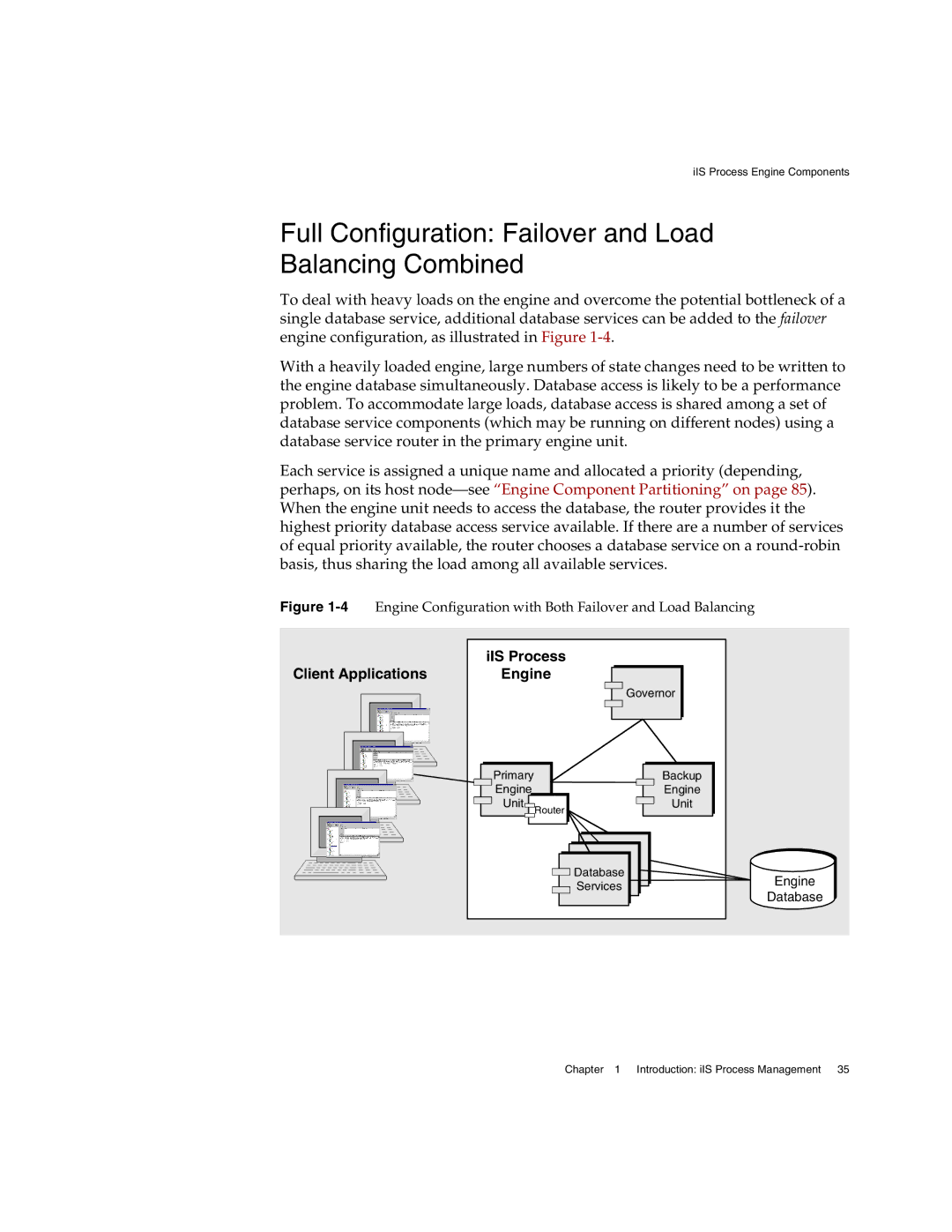
iIS Process Engine Components
Full Configuration: Failover and Load Balancing Combined
To deal with heavy loads on the engine and overcome the potential bottleneck of a single database service, additional database services can be added to the failover engine configuration, as illustrated in Figure
With a heavily loaded engine, large numbers of state changes need to be written to the engine database simultaneously. Database access is likely to be a performance problem. To accommodate large loads, database access is shared among a set of database service components (which may be running on different nodes) using a database service router in the primary engine unit.
Each service is assigned a unique name and allocated a priority (depending, perhaps, on its host
Figure 1-4 Engine Configuration with Both Failover and Load Balancing
|
|
| iIS Process |
Client Applications | Engine | ||
|
|
|
|
|
|
|
|
Primary |
Engine |
Unit |
Router |
Governor |
Backup
Engine
Unit
![]()
![]() Database
Database
Services
Engine
Database
Chapter 1 Introduction: iIS Process Management 35
